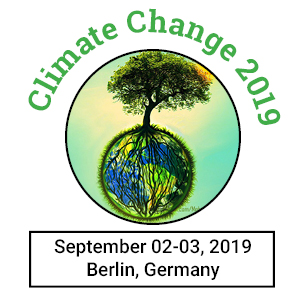Kaspars Naglis-Liepa
Latvia University of Life Science and Technologies, Latvia
Title: Associating Marginal Abatement Cost Curves (MACC) for greenhouse gas emissions from the agriculture of Latvia with carbon sequestration data
Biography
Biography: Kaspars Naglis-Liepa
Abstract
Statement of the Problem: Environmental preservation is one of the EU multifaceted policy priorities that influences all the other policies, among them agricultural (European Commission, 2011). Agriculture plays an essential role in environmental preservation and in shaping climate policies. The agriculture of Latvia is the second largest source of greenhouse gas (GHG) emissions, accounting for 24.2% of the total emissions produced in the country (Latvia’s National Inventory Report, 2017). All the sectors of the economy have to contribute to the reduction of GHG emissions.
Methodology & Theoretical Orientation: A popular way how to analyse GHG emission abatement measures is to use a marginal abatement cost curve (MACC) that ranges the measures according to their costs and emission reduction potential. The present research focuses on the MACCs designed for Latvia in relation to agricultural emission reduction measures, which were complemented by two new measures, i.e. “paludi culture crops (reed (for construction)) on arable land with organic soils” and “establishment of permanent crops (highbush blueberry) in organic arable land”, that are associated with land use and land use change. Besides, the research analysed 23 measures, revealing their effects on both the agricultural and the LULUCF sectors.
Findings: The overall conclusion was that the interaction of most of the measures was neutral (12 measures). Only three measures made positive effects on both sectors, meaning GHG emission reductions in both sectors. The effects of two measures were unclear, as there was a lack of relevant research investigations. However, a negative interaction was found for six measures, which was mainly due to the fact that an increase in green biomass produced by the agricultural sector would result in additional emissions, while the LULUCF sector would increase CO2 sequestration because of the increase in green biomass.
Conclusion & Significance: The research found that some of the measures incorporated in the complemented MACCs had potential for CO2 sequestration and C accumulation along with the potential for GHG emission reduction.

